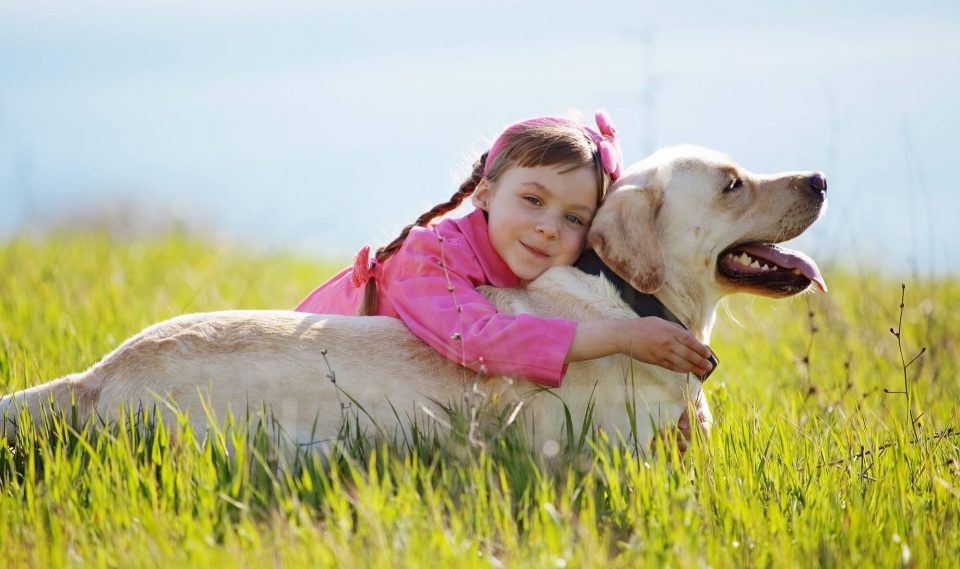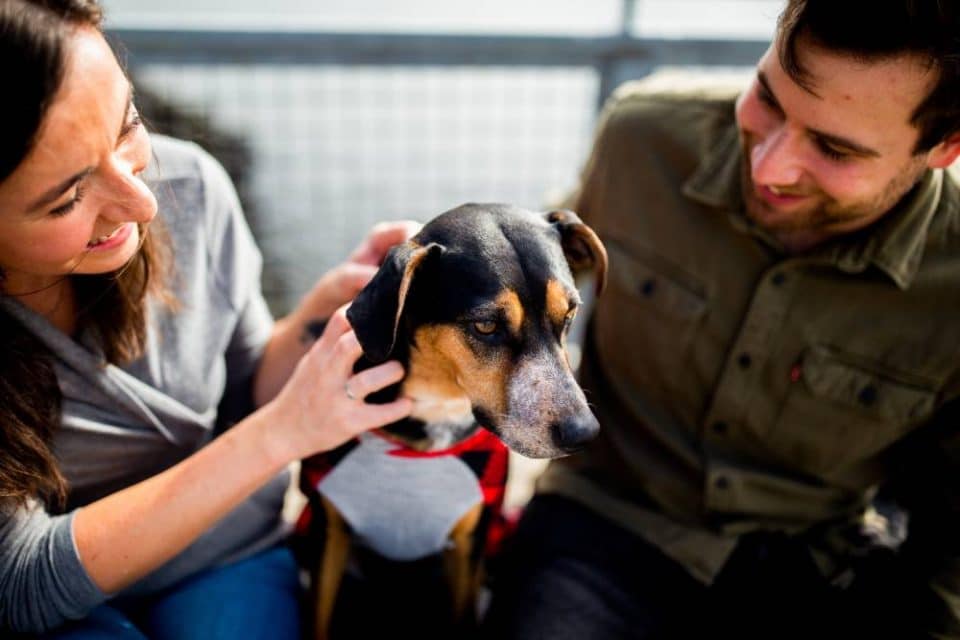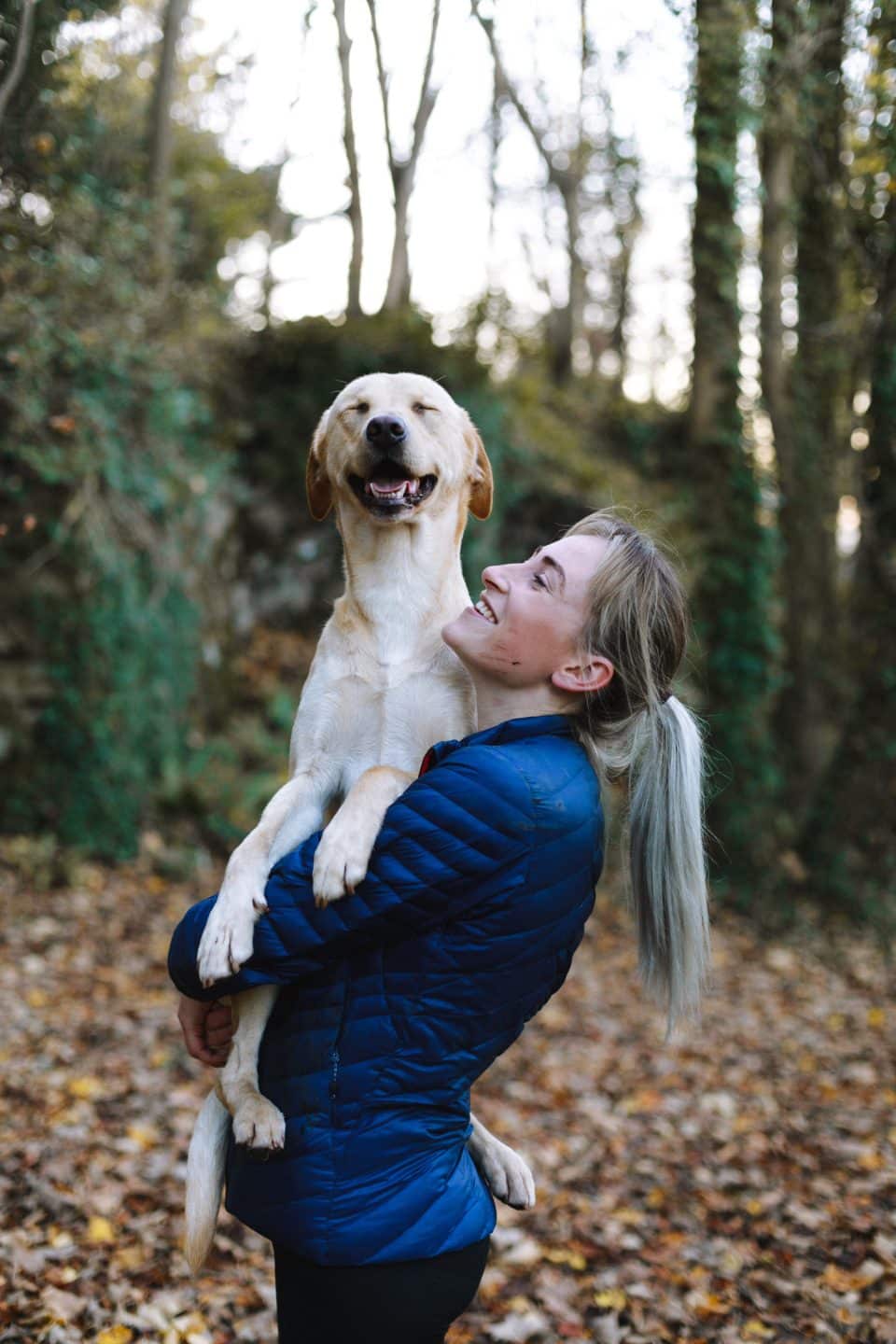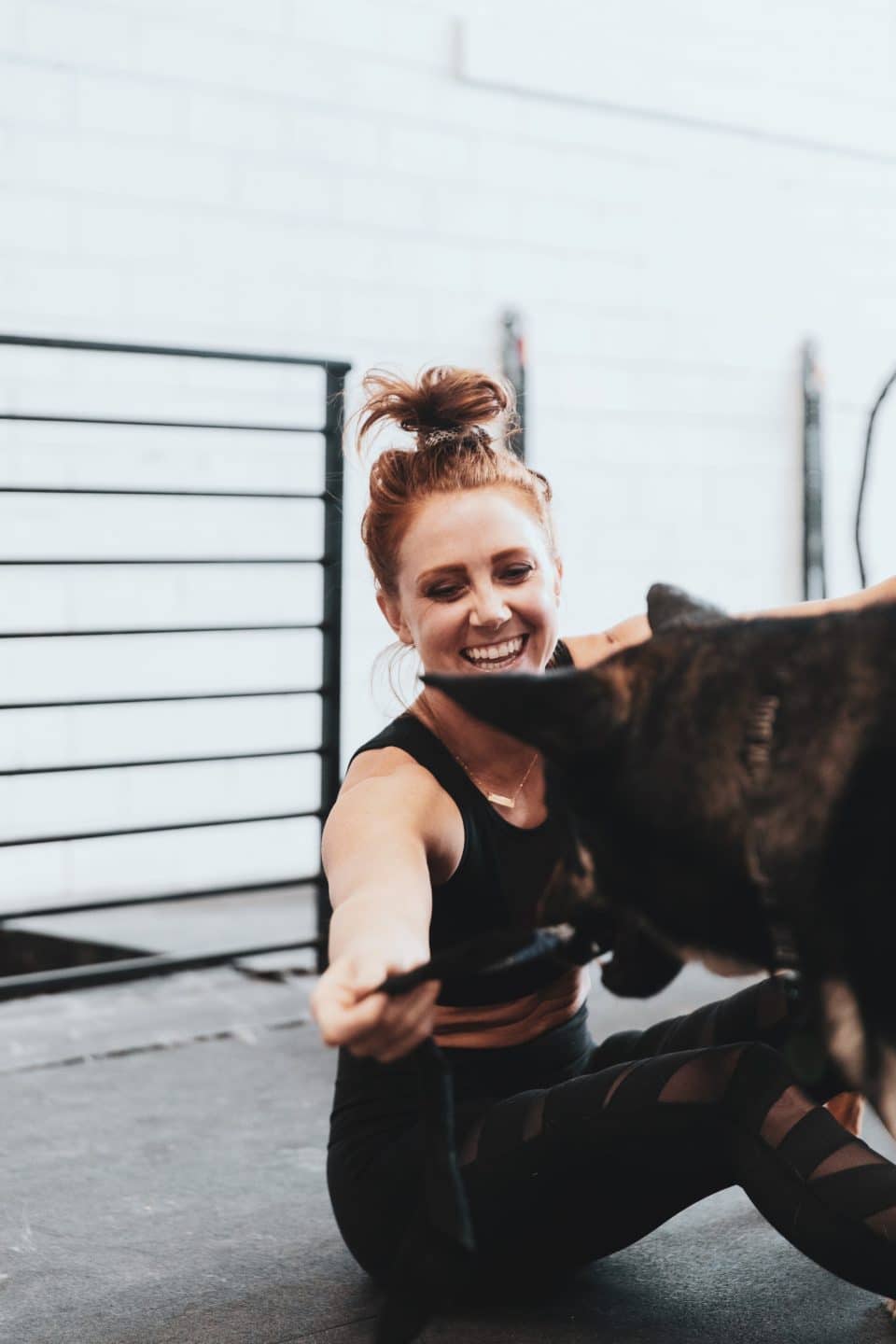Cats
7 min read
How Old Is My Dog or Cat in Human Years?
Published on Jul 7, 2023

Whether you have Great Dane, Labrador Retriever, Cocker Spaniel, or even a Yorkshire Terrier, don’t be ashamed to celebrate their birthday. Your dog’s birthday has rolled around, and you have a special dog-friendly cake ready for them. But wait—should the number of candles be in dog years or human years?
There’s an age-old calculation between dog years and human years—for every one lap around the sun, a dog ages seven years. Yet calculating the age of your pet isn’t as cut-and-dry as a one-size-fits-all formula. Fortunately, recent research offers an accurate method for determining dog and cat years in human years.
To make sure your pet is snacking on the right number of treats, and receiving the care they need at each stage of their life, let’s break down everything you need to know so you can answer once and for all: how old is my dog in human years?
Debunking the 7 to 1 Ratio Myth
The theory of seven dog years for every human year has lost its credibility. This isn’t to say that there is no truth to it, but scientists have narrowed down a much more accurate way to measure how old in human years is a dog.
Two ideas as to how this simplified ratio came about in the mid-20th century are:
Humans lived to about 70, whereas dogs lived to about 10 at the time of the formula.
An easy-to-remember formula relating dog ages to human ages would incentivize dog owners to bring their dogs into the veterinary clinic more often.
If this ratio were true, it would imply equal life spans for all dogs, regardless of breed or weight. In actuality, larger dogs tend to have a shorter lifespan than their smaller counterparts on average. This causes a great dane, for example, to enter their senior stage much earlier than a pomeranian.
What’s the Point of Converting Dog Years to Human Years?
Calculating your dog’s age in human years isn’t just an excuse to brush up on rusty 4th-grade math skills. Being well-informed about your dog’s life stage helps you understand their specific needs, keeping them alert and agile for as long as possible.
A dog’s life stage can influence all of the following aspects of their care:
Food type and quantity – Puppies and junior dogs are expending loads more energy compared to senior dogs, who might spend most of the day dozing off in the den. This causes younger dogs to benefit from foods with high caloric and fat content. But how to care for senior dogs? Adult dogs benefit from a combination of carbs, fats, and proteins, and senior dogs require even fewer calories and carbs.
Exercise needed – Whether it’s a relaxing walk around the neighborhood or a solid hour of fetch in a field, exercise is essential to keeping your dogs in shape. Although exercise also depends on breed, generally speaking, older dogs don’t need as much of it as their puppy counterparts. So don’t fret if, all of a sudden, your older dog starts to show a bit of reluctance on the fourth ball toss—why don’t you get that one.
Behavioral Changes – As dogs grow and change, so too does their behavior. You’re most likely going to be hiding your shoes and investing in a military-grade chew toy if there is a puppy around. Whereas with a senior dog, you’ll want to keep a close eye on swings in energy levels, reluctance to go up and down stairs, and other odd behaviors that could indicate aging-related illnesses.
Veterinary Visits – The average healthy adult dog only requires one visit to the veterinarian per year, whereas puppies often need several visits due to vaccination and neutering or spaying. Senior dogs may need two visits a year to check for any potential new ailments or receive treatments.
How to Correctly Calculate Dog Years to Human Years
Although a dog’s lifespan heavily depends on its breed, the actual age of your dog plays a huge role as well in the calculation.
Dogs age more quickly than humans in their first two years of life. Think of the rate of growth that human babies go through in their first years, dogs go through this as well in as little as a few months.
Human Year to Dog Year Calculation
The first step to calculating your dog’s age in human years is to determine what size dog they are. This is one of the largest determining factors of their lifespan. If your dog is not yet fully grown, or you can’t coax them onto the scale, you can search their breed’s average full-grown size.
Full-grown dog sizes run as follows:
Small – Up to 20 pounds
Medium – 20 to 50 pounds
Large – 50 to 100 pounds
Giant – Over 100 pounds
Once you have your dog’s full-grown size, then consider its age:
First Year – 15 human years for small to large dogs
Second Year – 24 human years for small to large dogs
Third Year – Add 4 to 5 years to 24 for every year past the third
Giant dogs that weigh over 100 pounds work a bit differently as they can age anywhere from four to seven years in one year throughout their life. On their first birthday, they are about 12 years old instead of 15, and then their ages are as follows:
Year 2 – 22
Year 3 – 31
Year 4 – 38
Year 5 – 45
Year 6 – 49
Year 7 – Add 7 to 8 years for every year past the seventh
This would mean that you will be throwing about 42 treats to your 20-pound boston terrier on his fourth birthday but 38 to your 120-pound great dane on his. There is wiggle room with these numbers as the life spans between breeds vary widely (plus, your great dane may be able to eat ten times that amount of treats).
Four Stages of a Dog’s Life
As your dog grows, their needs and behavior change with them. And arguably more important than knowing the exact age in human years of your dog is knowing what stage of life they’re in. The four life stages in the canine world are puppy, adult, senior, and geriatric. Depending on the size of your dog, they will enter into each phase sooner or later than others.
Small Dogs – Small dogs are puppies until 8 months, an adult until 10 to 12 years of age, a senior from then until 15 or 16, and geriatric over 16 years.
Medium Dogs – Medium dogs are puppies for the first year, an adult until 8 to 9 years of age, a senior from then until 12 to 13, and geriatric over 13 years.
Large Dogs – Large dogs are puppies until 15 months, an adult until 6 to 7 years of age, a senior from then until 11 to 12, and geriatric over 12 years.
Giant Dogs – Giant dogs are puppies for the first two years, an adult until 6 years of age, a senior from then until 8 to 9 years, and geriatric after 9 years.
Take advantage of your pet’s next appointment to consult their veterinarian about their food, exercise, and any potential behavioral concerns as they age. What to expect with an aging dog? Each phase brings significant changes and might have you wondering if your calm and composed senior dog is the same chew-happy puppy you adopted eight years ago. How to care for a senior dog?
Hey—What About Cats?
Cats have gotten the short end of the stick, or should we say mouse, when it comes to a handy ratio for their human age. This may come as a surprise as the ASPCA estimates that approximately 85.8 million cats are pets in the United States, whereas only 78 million dogs are pets.
No matter which of their 9 lives your cat is in, you can calculate cat ages in human years by following this guide:
First Month – 1
6 Months – 10
2 Years – 24
5 Years – 36
10 Years – 56
15 Years – 76
20 Years – 96
Cats’ lives can be divided into five main stages— kitten, junior, adult, senior, and geriatric. You can determine which stage your cat is in as follows:
Kitten – 1 to 6 months
Junior – 6 months to 2 years
Adult – 2 to 10 years
Senior – 10 to 15 years
Geriatric – 15 years and up
Cat ages in human years are much simpler to calculate as there isn’t the size variation we see in dogs. Cats also have a longer life expectancy than dogs, with the ability to live up to 20 years, especially with proper care and an indoor lifestyle. What are the signs of old age cats? Some common signs include decreased mobility, weight loss, bad breath, etc.
Experience Expert Veterinary Care with Papaya
Growing older comes with it a wise disposition, the ability to say “no thanks” to the fourth round of fetch, and more cuddle time on the couch. And as your pet and you age gracefully together, you can ensure they have access to veterinarian care they actually look forward to.
At Papaya Veterinary Care™, your pet and you can be confident in safe, professional, and stress-free appointments with Papaya Veterinary Care. Book an appointment today!
Sources:
- Chicago Journals. The Size—Life Span Trade-Off Decomposed: Why Large Dogs Die Young. https://www.journals.uchicago.edu/doi/abs/10.1086/669665?journalCode=an
- PetMD. How a Dog Ages and What You Can Expect at Each Life Stage. https://www.petmd.com/dog/care/how-dog-ages-and-what-you-can-expect-each-life-stage
- PetMD. How to Convert Dog Years to Human Years. https://www.petmd.com/dog/general-health/pet-myths-dog-years-human-years
- ASPCA. Pet Statistics. https://www.aspca.org/helping-people-pets/shelter-intake-and-surrender/pet-statistics














